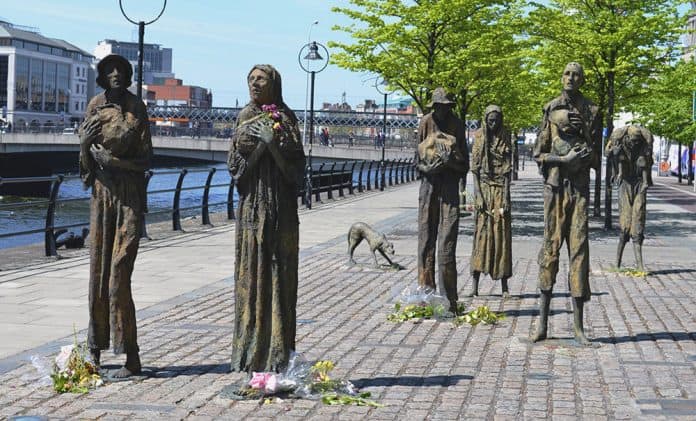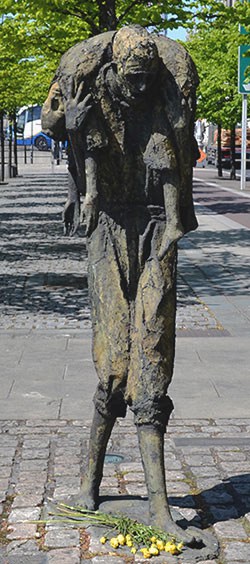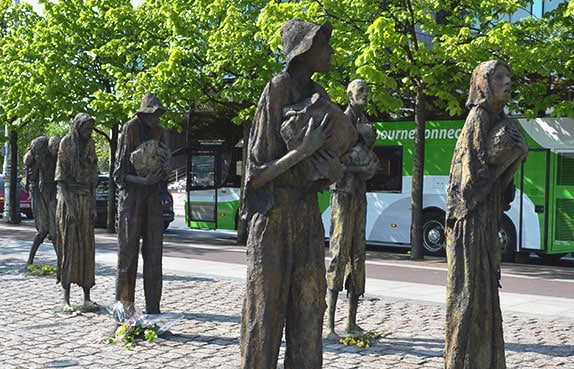
While it is certainly true that Ireland is home to countless memorials, sites of historical interest, public sculptures and other installations, few make the impression that eerie ‘Famine’ memorial situated on the bank of Dublin’s River Liffey does.
These startling, haunting, eerie statues aptly mark a pivotal event in Irish History – the Great Hunger.
Stark Reminder of An Gorta Mór

The statues, cast in bronze, consist of a number of terribly gaunt human figures who are trudging along the riverbank accompanied by a single dog in a similarly starved state.
These sobering sculptures represent the huge exodus of Irish people who fled Dublin (and indeed the rest of Ireland) during the famine known as the ‘Great Hunger’ (in the Gaelic ‘An Gorta Mór’) of 1845-48.
During this period, it is estimated that at least one million people starved to death, while a further million fled abroad, many to the United States and Canada.
National Treasure
Presented to the nation by Norma Smurfit in 1997, the sculpture is the work of the renowned Irish sculptor Rowan Gillespie.
Unsurprisingly, this is one of the most photographed pieces of public art in all Ireland.
Never Forgotten
The expressions on the sculpted figures truly capture the despair, anguish and desperation that those affected by the potato blight felt.
Often compared to the appallingly emaciated people captured in photos of the concentration camps in World War II, these individuals are similarly burned onto our consciousness and, once seen, are very hard to forget.

Fleeing for Their Lives
The people are shown fleeing in an attempt to secure passage on one of the many ships that set sail to North America, an epic journey at the best of times.
For many, this really was the only way that they would have any chance of surviving these awful events.
Historical Setting
One of the most striking features of this piece is how it is at odds it is with its environment.
It seems almost incongruous in this wealthy part of the city, which sprung up during Dublin’s most prosperous and successful period.
Its position is no coincidence, as it sits on the site where the The Perseverance set sail from the quay on St. Patrick’s Day 1846 – the first ship packed with Irish men, women and children fleeing their unbearable living conditions.
Heroic Act
The Perseverance’s captain was a seventy-four-year-old man by the name of William Scott, who had resigned from his safe office position to help transport the starving from Ireland to America.
On arrival, all his passengers were still alive.
Companion Piece
In 2007, some companion sculptures to the Dublin Famine statues were installed on the quayside of Ireland Park in Toronto Canada. It marks the location where those fleeing the Great Hunger arrived in that country.
A replica vessel from the period – The Jeanie Johnston – is moored very close to the ‘Famine’ statues, adding a touch of authenticity to this Dublin scene.
This ship has been fitted out as a museum where visitors can learn more about the suffering that Irish emigrants endured as they fled the awful consequences of the Great Hunger in search not only of a better life but of life itself.


